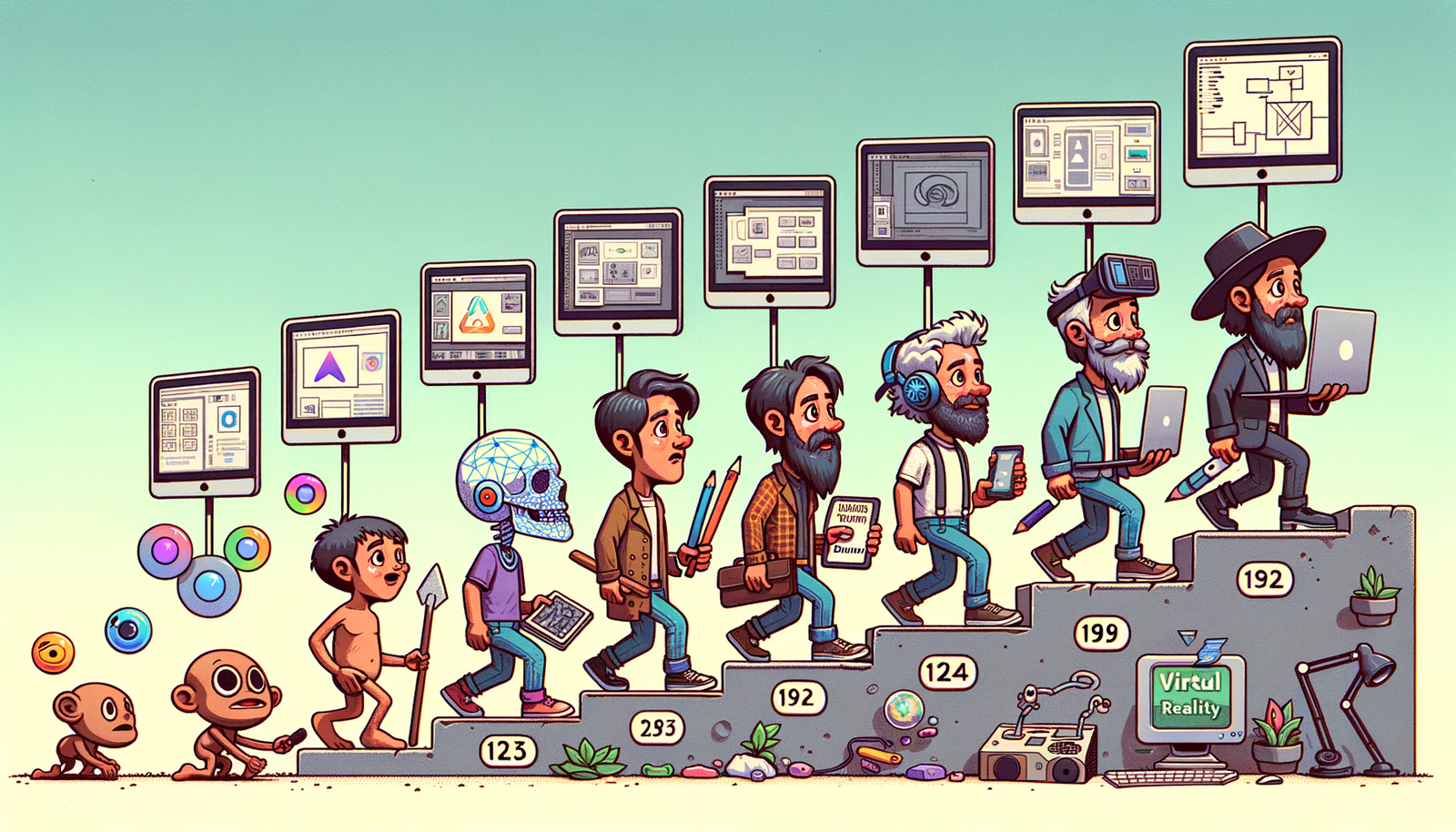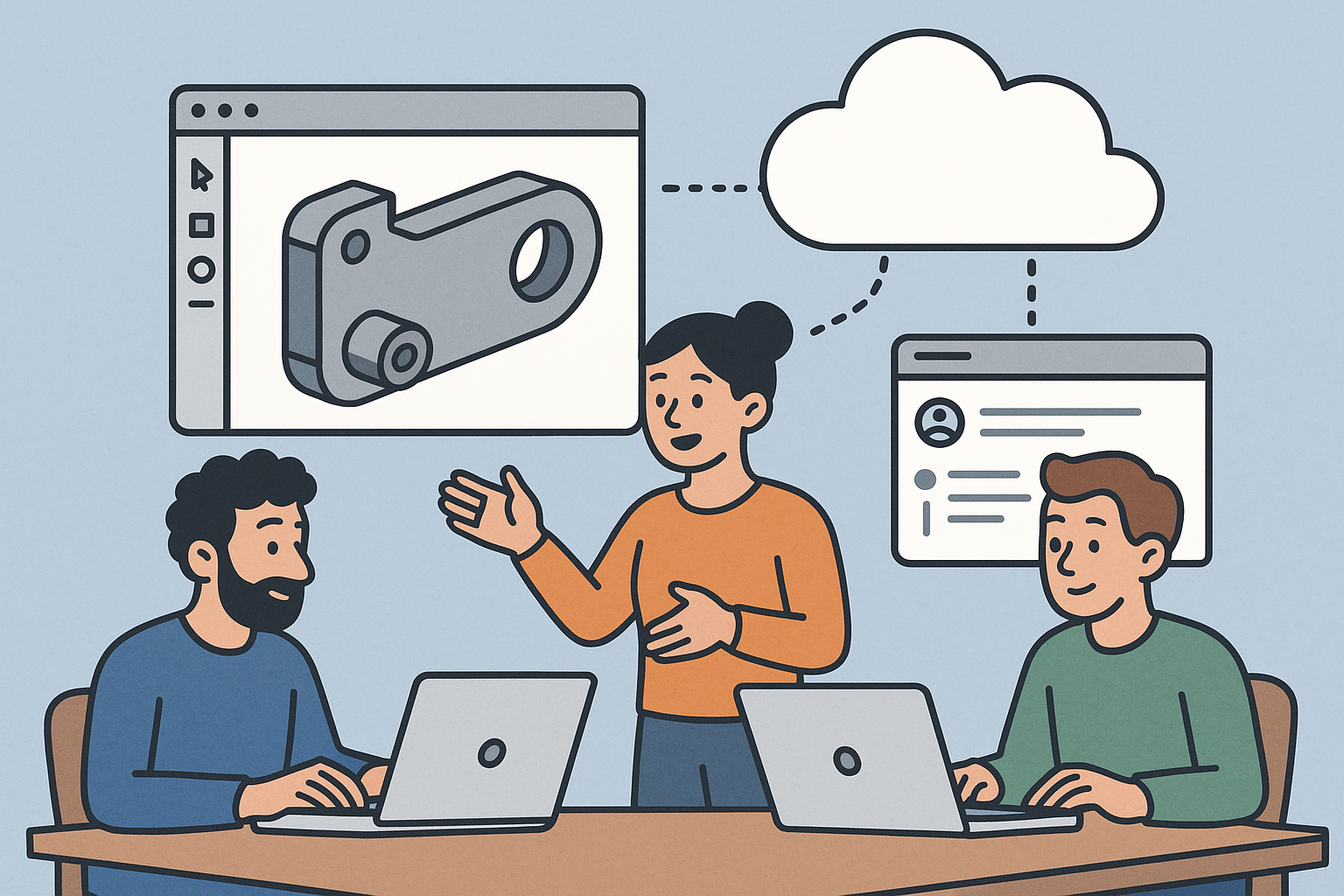Your Cart is Empty
Customer Testimonials
-
"Great customer service. The folks at Novedge were super helpful in navigating a somewhat complicated order including software upgrades and serial numbers in various stages of inactivity. They were friendly and helpful throughout the process.."
Ruben Ruckmark
"Quick & very helpful. We have been using Novedge for years and are very happy with their quick service when we need to make a purchase and excellent support resolving any issues."
Will Woodson
"Scott is the best. He reminds me about subscriptions dates, guides me in the correct direction for updates. He always responds promptly to me. He is literally the reason I continue to work with Novedge and will do so in the future."
Edward Mchugh
"Calvin Lok is “the man”. After my purchase of Sketchup 2021, he called me and provided step-by-step instructions to ease me through difficulties I was having with the setup of my new software."
Mike Borzage
Design Software History: The Evolution of Design Software: Integrating Virtual Reality for Future Innovation
September 05, 2024 6 min read


The Advent of Design Software in Virtual Reality
Early Beginnings of VR and Design Software
The concept of virtual reality (VR) dates back to the mid-20th century, with early visions of immersive experiences explored by science fiction writers. However, it wasn't until the late 1960s that the first tangible steps towards VR technology were made. Ivan Sutherland, often referred to as the "father of computer graphics," developed the first head-mounted display (HMD) system called the "Sword of Damocles." This primitive VR system laid the groundwork for future advancements by enabling users to interact with a simple 3D environment.
In the following decades, the field saw significant strides, particularly in integrating design software with VR. By the 1980s, companies like VPL Research, founded by Jaron Lanier, began experimenting with data gloves and HMDs to enhance user interaction in virtual spaces. This period marked the initial attempts at merging **design software** with VR, aiming to provide designers with tools to manipulate virtual objects intuitively.
Among the key figures in early VR design software development were pioneers like Jaron Lanier, who coined the term "virtual reality," and Tom Furness, who worked on the Super Cockpit project for the U.S. Air Force, incorporating advanced 3D graphics and HMDs for flight simulation. Companies such as Autodesk also began exploring VR's potential, recognizing its ability to revolutionize design processes.
Challenges and Innovations
The development of VR design software faced numerous technical and computational challenges. Early VR systems struggled with limited processing power, low-resolution displays, and significant latency issues, which hindered the creation of immersive experiences. Additionally, developing intuitive interaction methods within virtual environments posed significant hurdles.
Despite these challenges, several innovations paved the way for the transition from traditional 2D/3D CAD systems to immersive VR environments. Advances in computer graphics, such as real-time rendering and shading techniques, played a crucial role. **Pioneering software programs** like Autodesk's 3ds Max and Maya introduced sophisticated modeling and rendering capabilities, making the leap to VR more attainable.
One notable innovation was the introduction of spatial tracking technologies, enabling users to move freely within virtual spaces. Companies like VPL Research and later Oculus VR made significant contributions in this area. These technological advancements revolutionized how designers interact with their creations, offering a more immersive and intuitive experience.
Transformative Milestones and Key Players
Breakthrough Technologies
The evolution of head-mounted displays (HMDs) has been a cornerstone in the development of VR design software. Early HMDs, such as the "Sword of Damocles," were cumbersome and limited in functionality. However, the introduction of consumer-grade HMDs like the Oculus Rift in 2012 marked a significant breakthrough. Developed by Oculus VR, a company founded by Palmer Luckey, the Rift provided a high-quality VR experience accessible to a broader audience.
Alongside HMDs, the development of **motion tracking** and haptic feedback systems further enhanced the immersive nature of VR design software. Companies like HTC and Valve collaborated to create the HTC Vive, which featured precise room-scale tracking and hand controllers, allowing users to interact naturally with virtual objects.
Advances in rendering technologies have also been pivotal in supporting VR environments. Real-time rendering engines like Unreal Engine and Unity have played a crucial role in creating visually stunning and responsive virtual worlds. These engines offer powerful tools for developers to build immersive experiences, bridging the gap between traditional design software and VR.
Influential Companies and Software Solutions
Several companies have been instrumental in shaping the landscape of VR design software. Autodesk, a pioneer in computer-aided design (CAD) software, has continuously evolved its offerings to include VR capabilities. Software like **Autodesk VRED** provides advanced visualization and virtual prototyping tools, empowering designers to create and evaluate their models within immersive environments.
Dassault Systèmes, known for its 3DEXPERIENCE platform, has also made significant strides in integrating VR into design workflows. Their software solutions, such as CATIA and SOLIDWORKS, offer powerful tools for 3D modeling and simulation, enabling designers to visualize and interact with their creations in virtual spaces.
Unity Technologies and Epic Games, the creators of Unity and Unreal Engine respectively, have been at the forefront of VR development. These engines have become the backbone of many VR applications, providing developers with versatile tools to build immersive experiences across various industries. Collaborative ventures and partnerships between these companies and hardware manufacturers have further accelerated innovation in VR design software.
Applications and Impact on Various Industries
Architectural Visualization
VR design software has revolutionized the field of architectural visualization. Traditional architectural planning often relied on 2D blueprints and static 3D renderings, which could be challenging for clients to fully comprehend. However, VR provides a transformative solution, allowing clients to immerse themselves in virtual representations of architectural designs.
With VR, architects can create interactive walkthroughs of buildings, enabling clients to explore spaces as if they were physically present. This immersive experience enhances communication between architects and clients, leading to better-informed decisions and more successful projects. Architects can also use VR to test different design elements, such as lighting and materials, in real-time, ensuring the final product meets the client's vision.
Product Design and Manufacturing
The role of VR in product design and manufacturing cannot be overstated. VR design software allows for rapid prototyping and testing, significantly reducing the time and cost associated with physical prototyping. Designers can create virtual models of products, conduct simulations, and identify potential issues before manufacturing begins.
Industries such as automotive, aerospace, and consumer products have embraced VR design tools to streamline their development processes. In the automotive sector, for example, VR enables designers to visualize and interact with full-scale vehicle models, optimizing ergonomics and aesthetics. Similarly, aerospace companies use VR to simulate complex assemblies and maintenance procedures, ensuring safety and efficiency.
Educational and Training Platforms
VR design software has found valuable applications in educational and training environments. In educational institutions, VR provides students with immersive learning experiences, allowing them to explore complex concepts and gain hands-on experience in a virtual setting. For instance, medical students can practice surgical procedures in a risk-free virtual environment, enhancing their skills and confidence.
Professional training programs also benefit from VR's capabilities. Industries such as healthcare, military, and aviation use VR simulations to train personnel in realistic scenarios. This approach not only improves training outcomes but also reduces costs and risks associated with traditional training methods.
Future Trends and Prospects in VR Design Software
Emerging Technologies
The future of VR design software is poised for exciting developments, driven by emerging technologies. The integration of **artificial intelligence (AI)** and **machine learning (ML)** with VR design tools holds immense potential. AI-powered algorithms can assist designers by automating routine tasks, optimizing designs, and providing intelligent recommendations. Machine learning can analyze vast amounts of data to improve design accuracy and efficiency.
Cloud-based VR design platforms are another promising trend. These platforms enable collaborative workspaces where designers from different locations can collaborate on projects in real-time. Cloud computing provides the necessary computational power to run complex VR simulations, making it accessible to a wider audience. Companies like NVIDIA are pioneering cloud-based VR solutions, offering powerful tools for designers to create and share their work seamlessly.
Predicted Industry Shifts
The VR design software industry is expected to undergo significant shifts in the coming years. One anticipated trend is the convergence of VR with augmented reality (AR), resulting in **mixed reality** experiences. This fusion will allow designers to seamlessly switch between virtual and real-world environments, enhancing their creativity and productivity.
Another potential disruption is the democratization of VR design tools. As technology advances and becomes more affordable, smaller design studios and individual designers will have access to powerful VR tools previously reserved for large enterprises. This democratization will foster innovation and drive the adoption of VR design software across various sectors.
Visionary Insights
Industry leaders and innovators have shared their visions for the future of VR design software. Tim Sweeney, CEO of Epic Games, envisions a future where VR and real-time 3D technologies become the standard for design and visualization. He believes that the ability to interact with designs in real-time will revolutionize industries ranging from architecture to entertainment.
Similarly, Carl Bass, former CEO of Autodesk, emphasizes the importance of collaboration in VR design. He envisions a future where designers can work together in virtual spaces, leveraging AI and cloud computing to create and iterate on designs seamlessly. This collaborative approach will accelerate innovation and drive the adoption of VR design software across various sectors.
Also in Design News

Design Software History: Collaboration in Design Software: From File-Based PDM to Cloud-Native Co-Editing and Design Threads
December 23, 2025 9 min read
Read More
End-to-End Encryption for CAD/PLM: Protecting Design IP in Cloud Workflows
December 23, 2025 13 min read
Read More
Cinema 4D Tip: Camera-Based Projection Mapping Workflow for Cinema 4D
December 23, 2025 2 min read
Read MoreSubscribe
Sign up to get the latest on sales, new releases and more …


